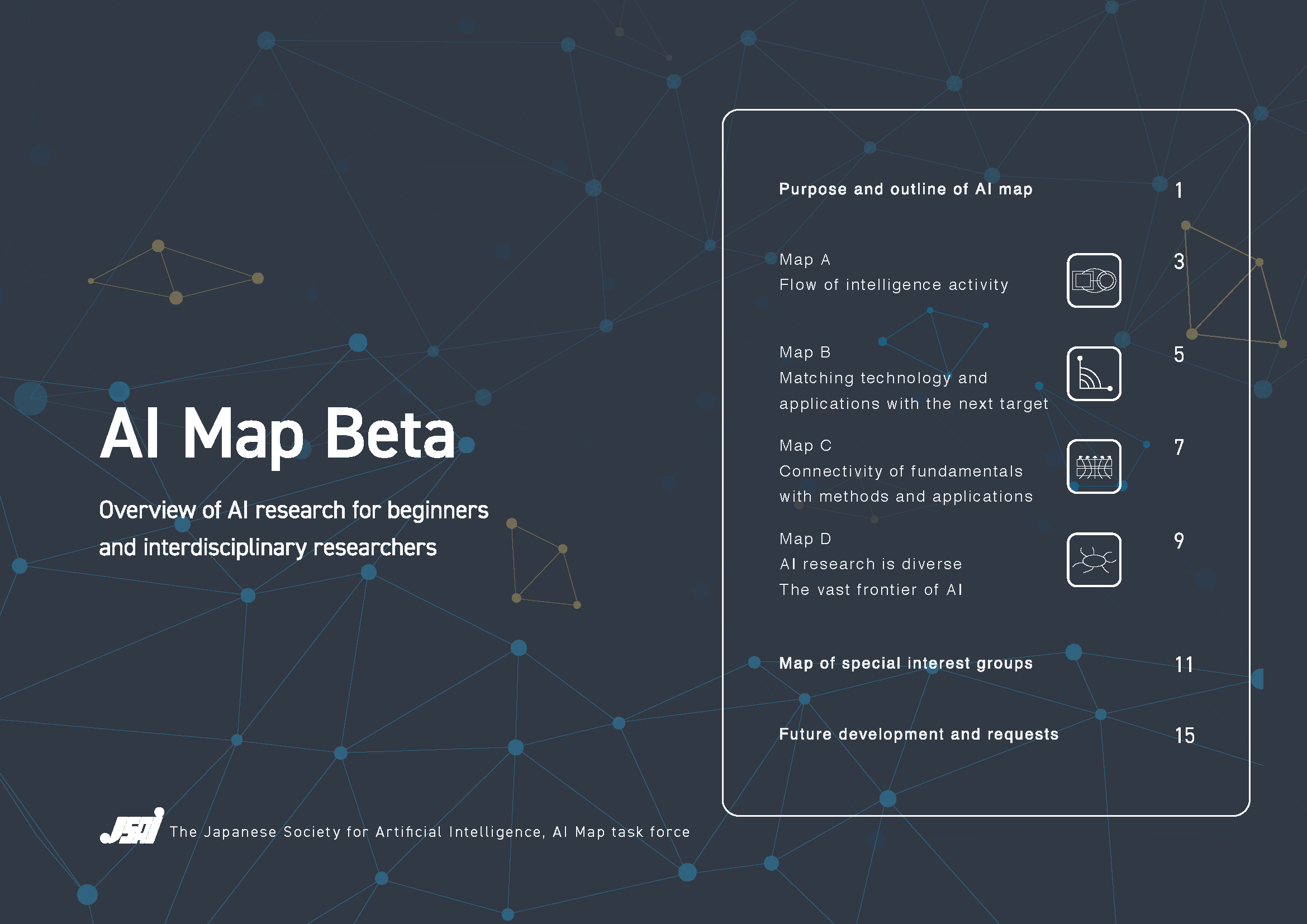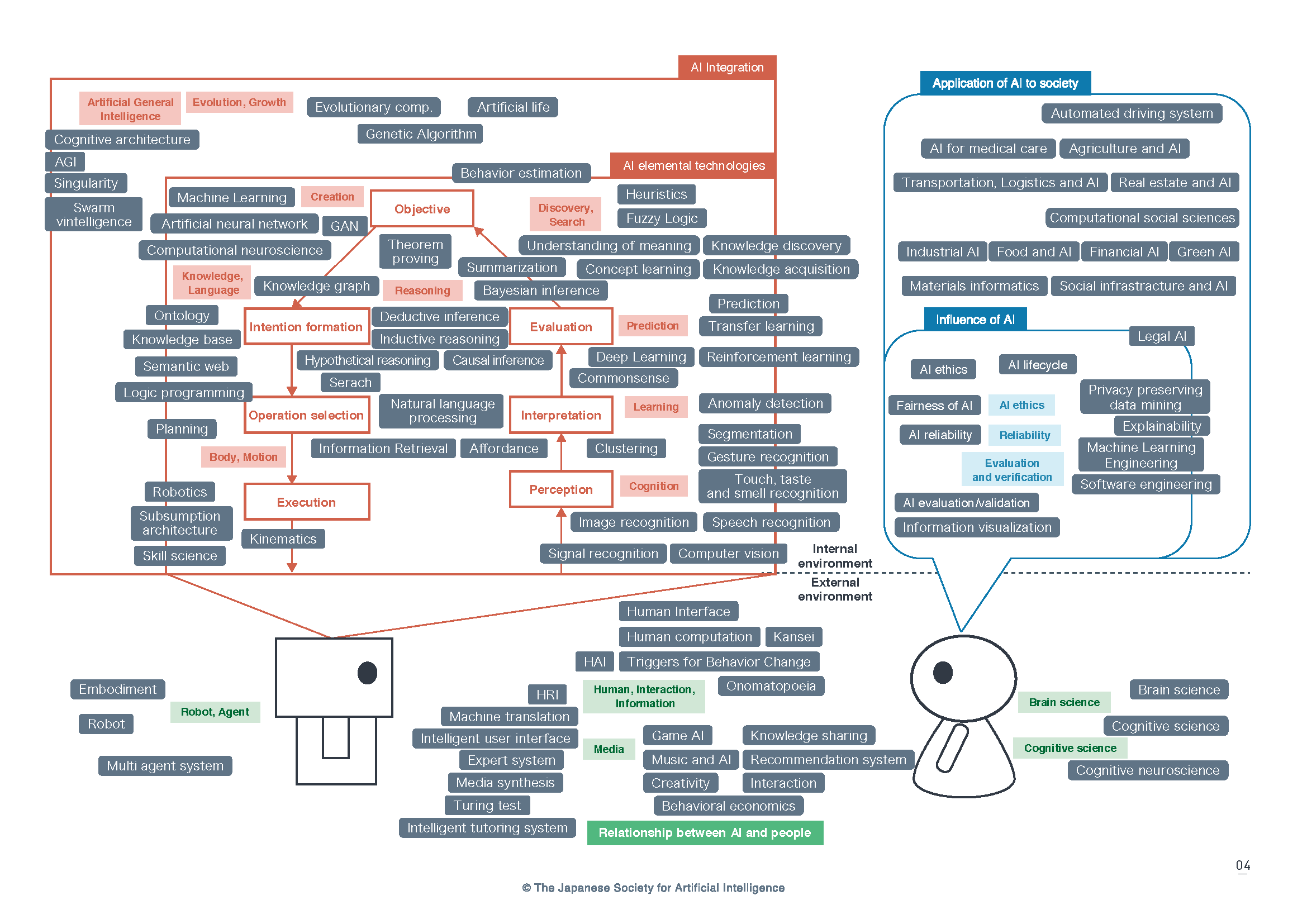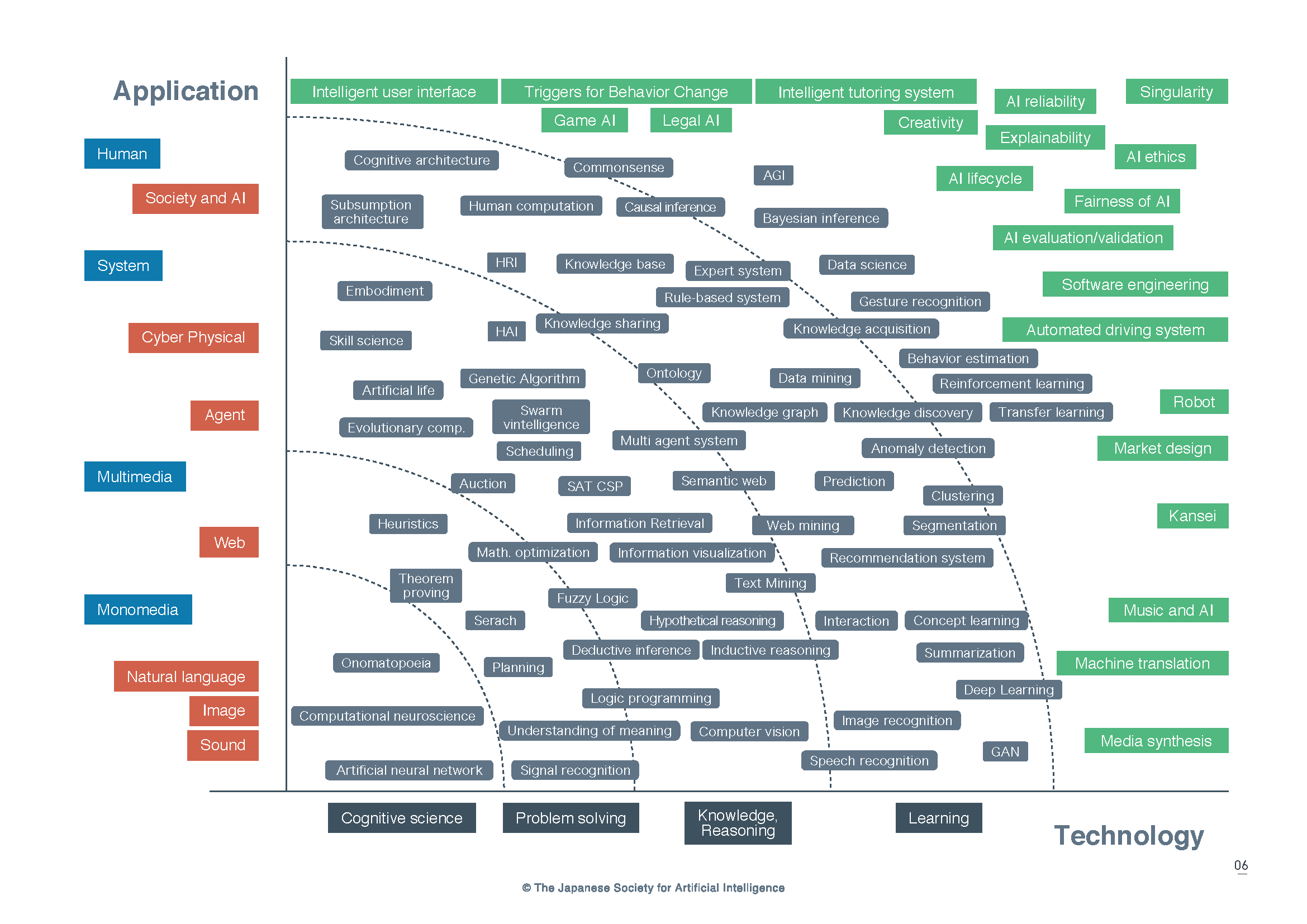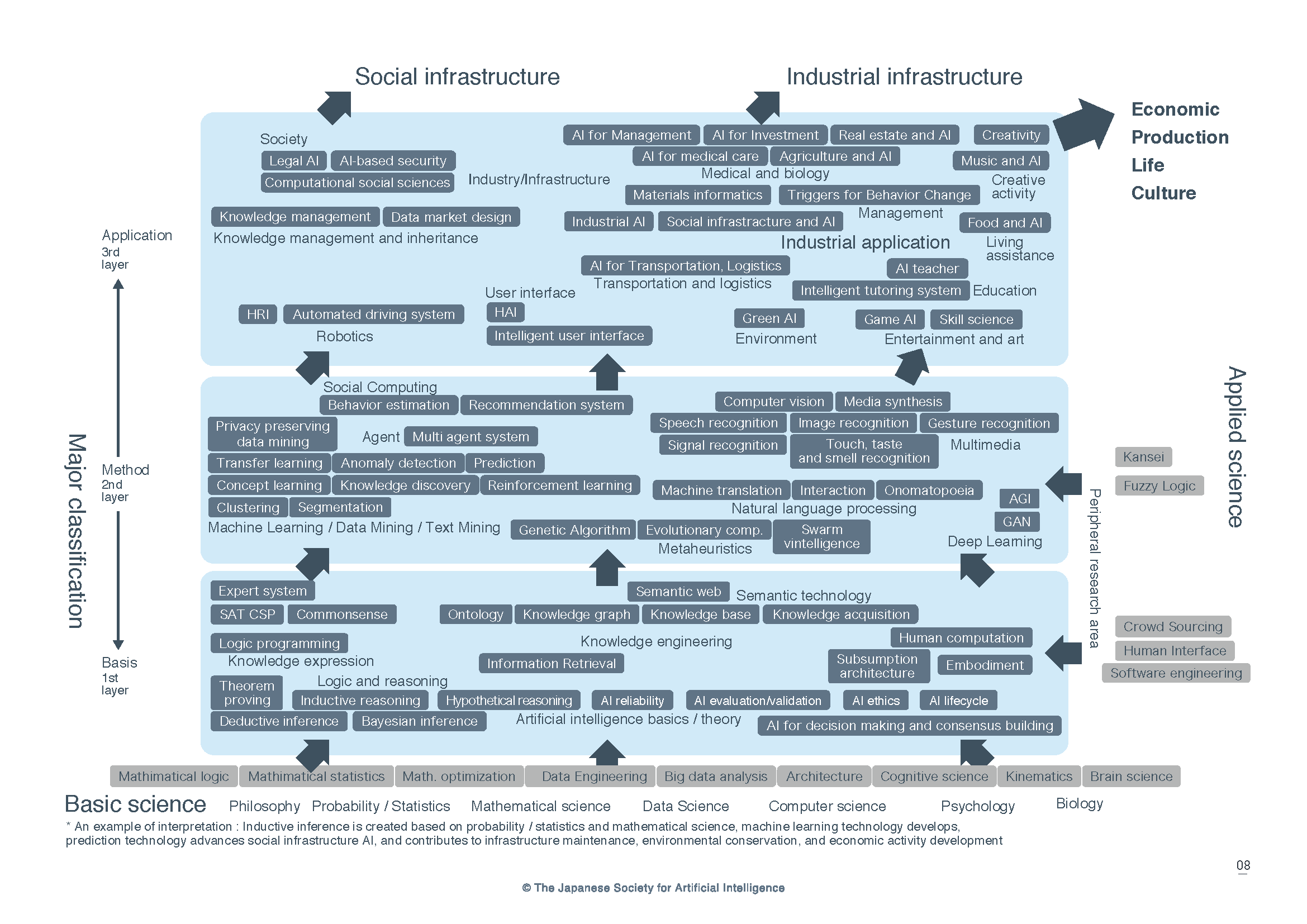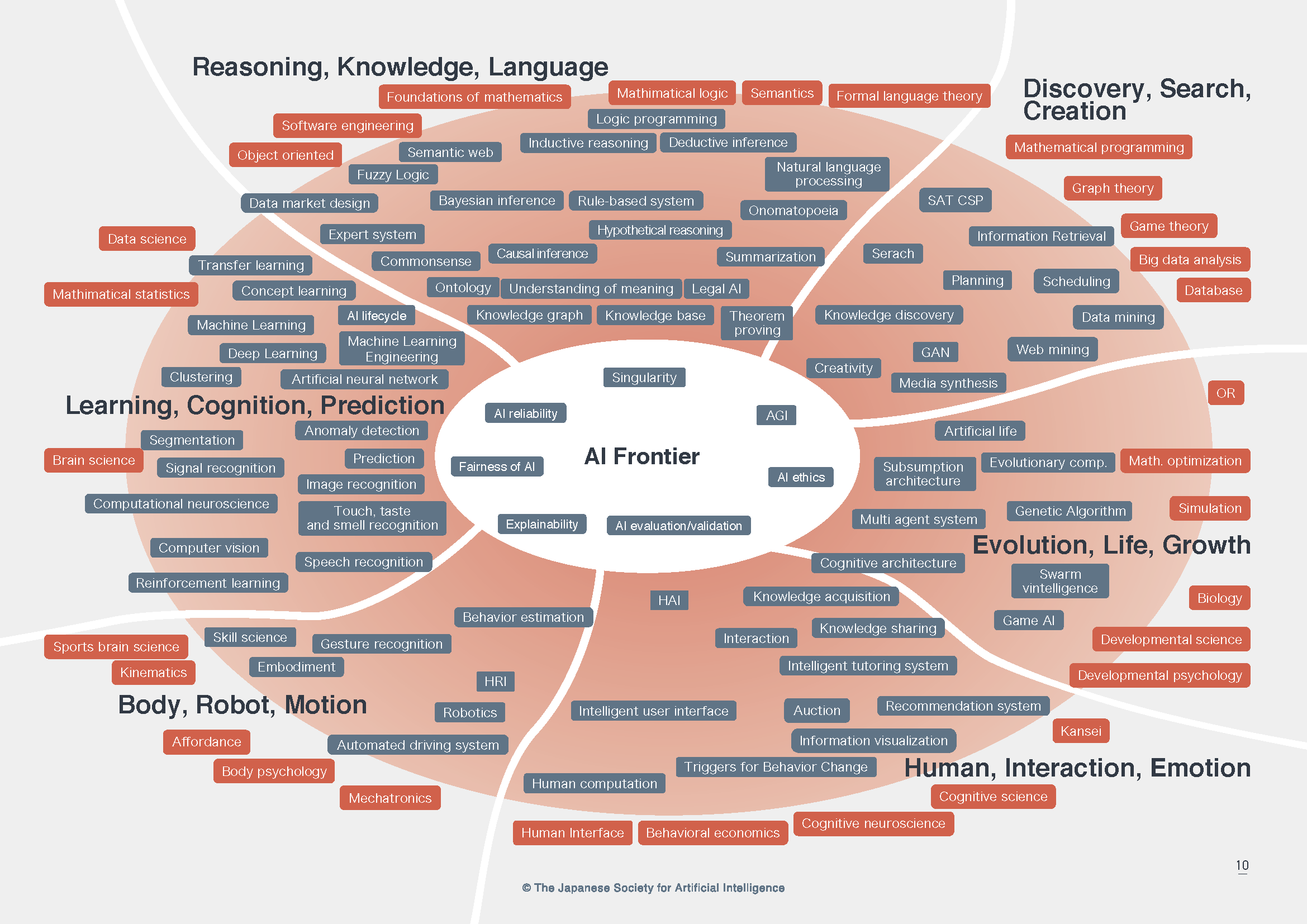
Overview of AI research for beginners and interdisciplinary researchers
Artificial intelligence (AI) research has expanded greatly this century, making it difficult to capture the whole picture. Therefore, we have created the ‘AI Map’ series of maps to provide sketches of this picture to help new AI researchers with their future work as well as researchers in other fields who would like to use AI.
There are many areas of AI research. These areas are intricately linked and developing rapidly so it is difficult to fit the relevance of all research fields into a single map without contradiction. Therefore, for the beta version of the AI Map, we created four maps that capture AI research from four different perspectives.
The four maps are beta versions and we plan to improve them further. We also expect that volunteers will produce additional maps. For example, experts in specific fields will create partially detailed maps as well as tutorials, and these maps will be linked to the beta versions.
As an introduction, we describe the four maps and illustrate their usage.
Map A focuses on the process of intelligence. The concept of intelligence as an input/output process flow is shared by many AI researchers, and research on each step of this process is ongoing. This map is intended to be used to develop fundamental research to realize complex processing, or to deconstruct intellectual processing. In addition, the viewpoints of individual intelligence and group intelligence are included in this map.
Map B shows the relationship between technologies and applications. Many AI studies research fundamental technologies with limited targets. This map shows representative pairs of technologies and objects. Because there have been many successful studies in which the target shifted, the next successful area may center on individual keywords. The map is intended to show how to shift research targets as well as the peripheral technology used for applications.
Map C focuses on the foundations that AI research rests on and AI’s various applications. AI research is a highly interdisciplinary field broadly based on natural sciences, humanities, and social sciences. In addition, the map shows important areas of application. This map is intended as a reference when reviewing fundamental research or when exploring new applications.
Map D shows AI researchers’ various answers to the question “What is intelligence?”. One researcher answered “learning, recognition, and prediction”. Other research is pursuing various aspects of intelligence, such as “inference, knowledge, and language” as well as “discovery, search, and creation”, and how these aspects mutually affect one another. This map is intended to show the spread of AI research and the depth of the research field. The frontier of AI research is broad.
[Keywords]
- Each map has keywords that represent AI-related research fields.
- The keywords were selected by the task force from among those used in academic journals, by special interest groups, and so on, based on whether the keywords are suitable for representing the overall picture of AI research.
- Because the applications of AI are constantly expanding, we focused on application keywords that the task force identified as important at the time the map was published. (Example: materials informatics.)
- The target ranges of the keywords overlaps, and the size of the granularity and the degree of abstraction have some variation.
- The keywords in the maps do not match because some keywords are not visible in some maps.
- Each map also includes keywords in broader research fields beyond AI, in which case these keywords represent AI research in the field. (Example: information search.)
- The maps also include keywords for other research fields and application fields that are closely related to AI research. (Example: behavioral economics, standardization.)
- Other important keywords may be missing. We encourage researchers to suggest new keywords.
[About quoting and reusing AI maps]
You can freely use this AI map in the following manner within the citation range.
- Do not copy the entire booklet.
- Add the citation “Japanese Society of Artificial Intelligence AI Map Beta (June 2019 Version)” and include the download URL.
We would appreciate it if you could send the cited material to the JSAI Secretariat (info [at] ai-gakkai.or.jp, replacing [at] with @). We will use it for our future activities.

